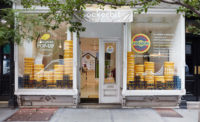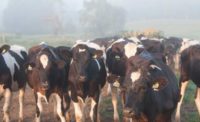DFA opens ‘newly reimagined’ cheese store in Utah
‘The Creamery’ offers visitors unique farm-to-table dining, a farm-fresh boutique and an interactive experience.

At The Creamery, DFA offers an interactive, educational experience about dairy.
Dairy Farmers of America (DFA), a Kansas City, Kan.-based cooperative owned by family farmers, opened the doors of its “newly reimagined” retail store, full-service café and interactive experience, “The Creamery,” in Beaver, Utah, on Nov. 17. Whether it is travelers passing by on Interstate 15 looking for an inviting place to stretch their legs, families looking for a unique dining experience to create memories or customers seeking its DFA’s famous squeaky cheese, The Creamery is a must-stop attraction, DFA said.
The 11,250-square-foot store, located midway between Las Vegas and Salt Lake City along Interstate 15, is more than four times the size of the original store it replaced and features expanded retail space, greater product selection and an interactive, educational experience about dairy. The store’s interior combines modern, clean lines with rustic touches for a welcoming and natural feel, DFA said. The Creamery builds on the success of the previous location, one block away, and will offer a variety of dairy products, including cheese curds, hand-crafted cheeses, ice cream and branded merchandise.
The new concept also features a full-service café serving breakfast and lunch. Menu items will include fresh-made sandwiches and other dairy-based selections showcasing the local cheeses made at the adjacent DFA Beaver City plant, which was built by dairy farmers and has been a part of the region’s history for more than 60 years, DFA noted.
“The Creamery is filled with unique storylines from its heritage in cheese making to its all-new dairy experience attraction, but what really sets it apart is The Creamery is a farm-to-table concept owned by hardworking family dairy farms,” said Dennis Rodenbaugh, senior vice president and chief operating officer of DFA’s Western Fluid Group. “These dedicated family farms work tirelessly to provide the milk needed to make The Creamery’s wide variety of cheeses. Our hope is that visitors leave The Creamery with new family memories and traditions, a deep appreciation for the dairy they consume and stories and history about these family farms.”
Looking for a reprint of this article?
From high-res PDFs to custom plaques, order your copy today!







